ACADEMIA
LORENA GARCIA teaches across all undergraduate and graduate years levels working with students
on projects focus in fundamentals of design, ecology, resilient landscapes, climate change,
and intersections between art and landscape architecture.
Lecturer at Landscape Architecture Department, College of Environmental Design, Cal Poly Pomona
Profesora invitada ar DMAD, Madrid, Universidad Nebrija de Madrid
For more info visit https://portfolium.com/LorenaGarcia21
COURSES
LANDSCAPE ARCHITECTURE DEPARTMENT, COLLEGE of
ENVIRONMENTAL DESING, CAL POLY POMONA
- Fall 2022: LA 4782 Evolving Issues: International Studio Abraod,Italy
- Fall 2022: LA 4873 International Practice. International Studio Abraod, Italy
- Spring 2022: LA2121L_Ecology Design
- Spring 2022: LA3121L_Gathering aroung Silver Lake Reservoi
- Fall 2021: LA1111L_Figure and Ground
- Spring 2021: LA1121L Topographic Form
- Fall 2020: LA1111L Figure and Ground
- Spring 2020: LA1121L Topographic Form
- Fall 2019: LA1111L Figure and Ground
- Spring 2019: LA3121L Gathering around Silver Lake Reservoir
- Spring 2018: LA3121L BREAKING LOTS Transforming parking lots
on public spaces and sustainable systems.
OTHER COURSES
- Spring 2020, Fall 2020, Spring 2021, Fall 2021: Spanish language in Landscape Architecture.
DMAD- SCHOOL OF DESIGN, UNIVERSIDAD NEBRIJA, MADRID
- Dic 2022: Modulo Paisajismo, Master en Global Design, Dmad, Madrid, Sp
- July 2022: Geometria Diferente, Dmad, Madrid, SP
- Jun 2022: Modulo Paisajismo, Master en Global Design, Dmad, Madrid, Sp
- March 2021: Geometria Diferente, Dmad, Madrid, SP
- May 2021: Modulo Paisajismo, Master en Global Design, Dmad, Madrid, Sp
- May 2021: Geometria Diferente, Dmad, Madrid, SP
- January 2021: Geometria Diferente, Dmad, Madrid, SP
- December 2019: Geometria Diferente, Dmad, Madrid, SP
- December 2018: Geometrias Diferentes, Dmad, Madrid, SP
ECOLOGY DESIGN LABORATORY
Spring 2022
2rd year studio-2019
Landscape Architecture Department
College of Enviromental Design
Cal Poly Pomona, CA
https://env.cpp.edu/la/la
LA 2121L is an applied studio design course that integrates design foundations with plants and ecology within a
framework of landscape architectural design methods and processes. This course will address aesthetic
considerations and technical methods associated with utilizing plants and ecology as the basis for design.
This course will explore plants and ecology as a strategic framework for design and as a series of site-scaled
decisions. As strategy, this course will explore concepts of sustainability, resilience and succession and their
influence on ecological design practices and landscape management. At the site-scale, this course will explore
plant selection and planting design in a series of particular applications as it influences performance, use and
experience including the perceptions of space, wildlife habitat and individual and public health. Additionally, this
course will address the basic horticultural and site design needs of planting and the policies and procedures that
guide those decisions within the public realm.
PROJECTS_
1. Tiny Landscapes
2.Gardens of Varietation
3. Site Analysis
4. Conceptual Site Design
5. Planting Design
1. Tiny Landscapes
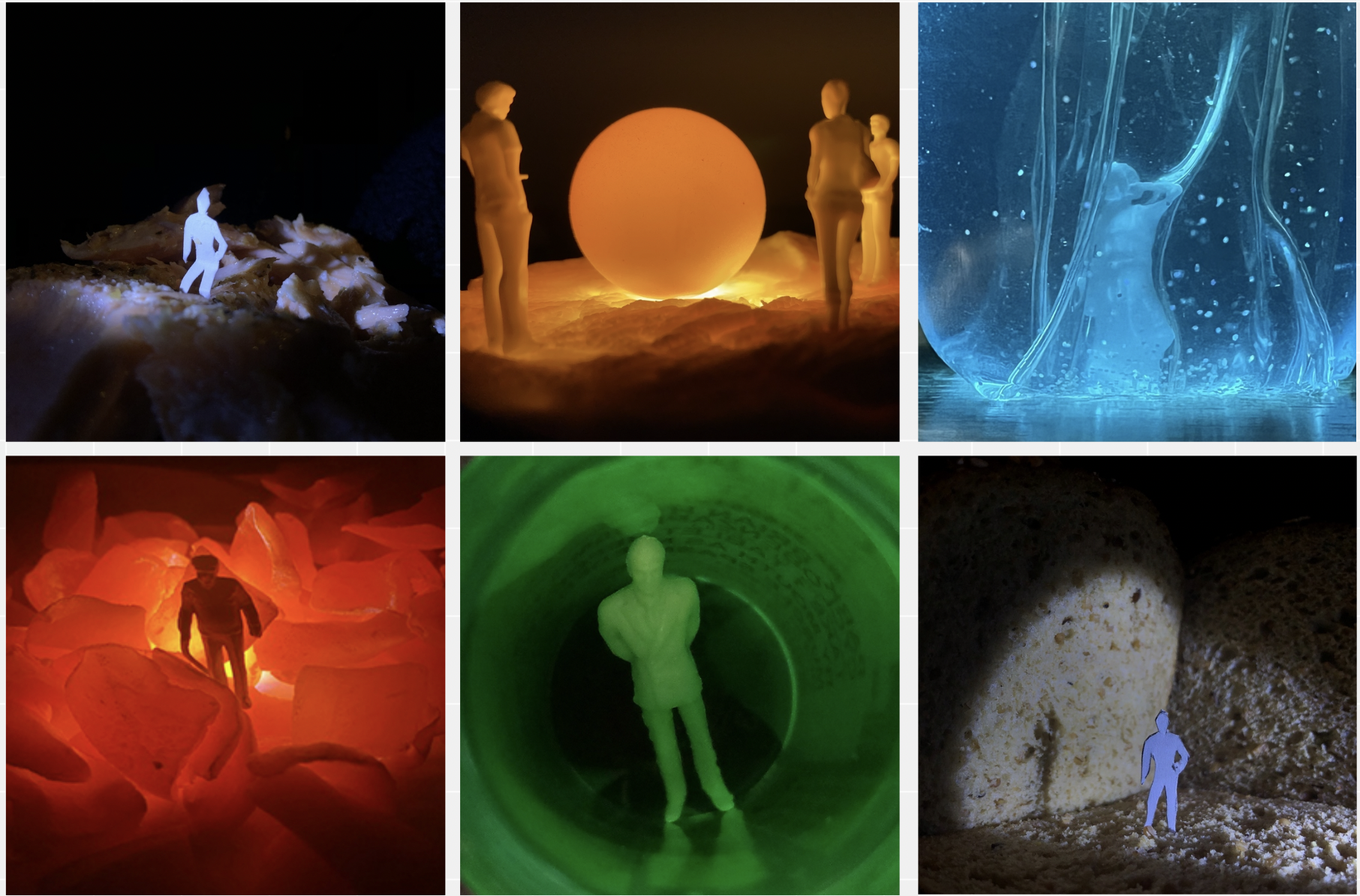
5. Planting Design



Figure and Ground
Fall 2019, Fall 2020, Fall 2021
1st year studio, coordinated by Rennie Tang and Nina Briggs
Landscape Architecture Department
College of Enviromental Design
Cal Poly Pomona, CA
https://env.cpp.edu/la/la

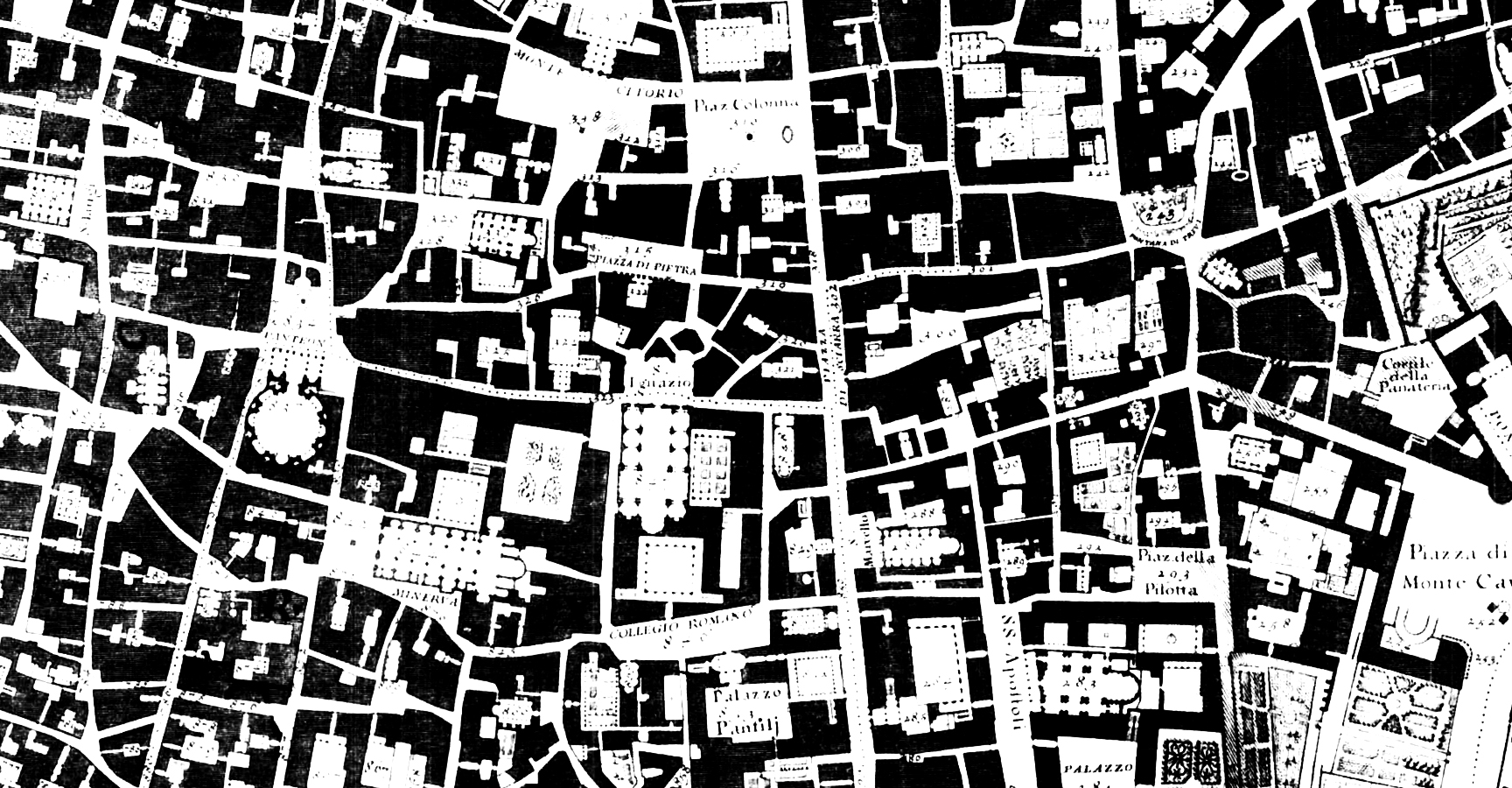
Fundamental concepts in design and their connection to the discipline of Landscape Architecture.
Emphasis on creative investigation of space and form in relationship to the human scale.
Investigations entail hands-on projects that engage students with the foundational disccourse
of Landscape Architecture.
Projects:
TextScape
To understand figure-ground as a fundamental compositional tool in landscape design, students apply the concepts
of syntax and narrative in a figure-ground composition and learn some basic graphic tools in Photoshop and
InDesign. At a basic spatial design level, learning how to manipulate figure-ground relationships enables
us to guide visual perception which in turn affects people’s experience of a place. This is a fundamental skill
for a landscape designer who strives to enhance human experiences through the shaping of space.
Students research the etymology of theirfirst and last names, write a narrative, and craft photographic figure-ground
compositions of their initials - a syntax of representation and meaning.
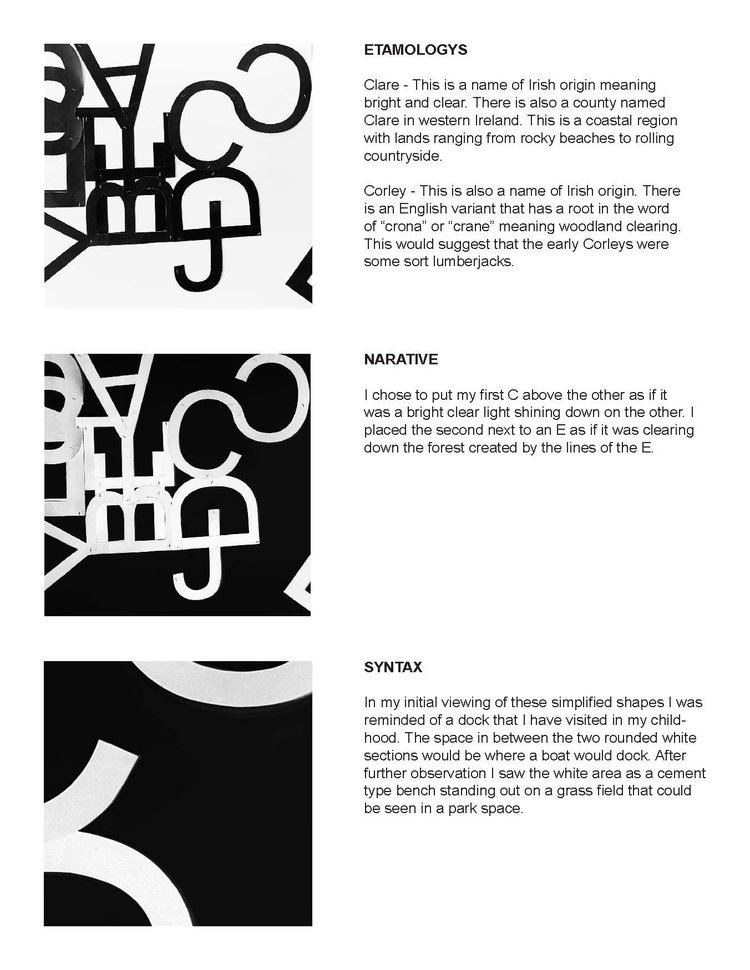
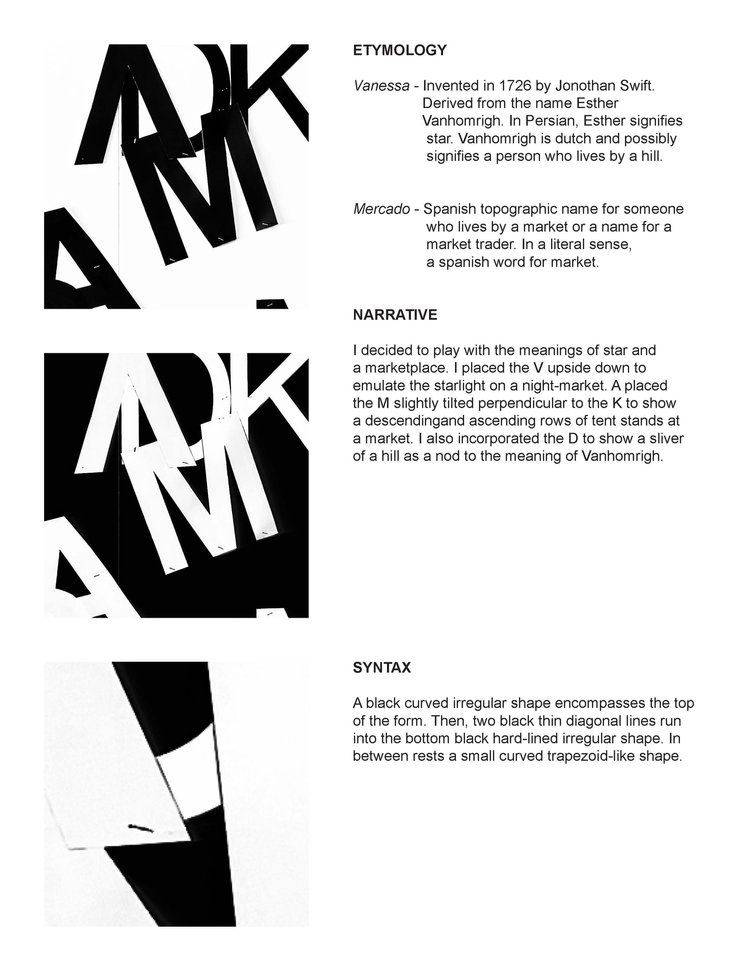
TreeScape
Students get to know their assigned campus tree - its species, base of the trunk, roots (if visible), trunk, branches,
leaves and canopy - to understand the TEXTURAL qualities of the tree. By exploring the textures, using all senses:
touching, hearing, smelling, tasting, moving - students experience the tree from all directions and viewpoints
while photographing and sketching it and thsurrounding context. Listening to the tree, students create the tree’s
sonic profile and translate to texture drawing with charcoal- figure-ground compositions - considering
balance and proportion. The tree’s identity is further explored (family, foliage type mature height,
mature spread, light exposure, soil preference, shape and bark), as well as its culture (geographic origins,
cultural associations, culinary or medicinal uses, cultural or indigenous traditions and any notable characteristics)
- culminating in a graphic booklet.

Topographic Form
Spring 2020, Spring 2021
1st year studio, coordinated by Rennie Tang and Nina Briggs
Landscape Architecture Department
College of Enviromental Design
Cal Poly Pomona, CA
https://env.cpp.edu/la/la



LA1121L is the second course within the lower division design sequence. This studio focuses
on the generation of topographic form using a variety of different modeling techniques and
materials. Using an iterative process, we observe and record patterns in the landscape, then
investigate how to translate these patterns into physical form. Investigations emphasize
the generation of 2D and 3D form through spatial operations that are controlled by a
combination of digital and analog tools. Abstract topographic constructs serve as an
introduction to landform, how it guides water flow and how it can be manipulated to create
strong visual, performative, and experiential effects.
“The land we inhabit is an accumulation of past events we can make visible by means of landscape
architecture… It assumes that we think of the discipline of landscape architecture as involving
not only the planting of certain forms of flora or the shaping of geography toward scenic ends
but also the acts of digging, naming, articulating, and otherwise clarifying what already exists.”
– Aaron Betsky -
Occupy Space Unit (OSU)-
Fall 20191st year studio, coordinated by Rennie Tang and Nina Briggs
Landscape Architecture Department
College of Enviromental Design
Cal Poly Pomona, CA
https://env.cpp.edu/la/la
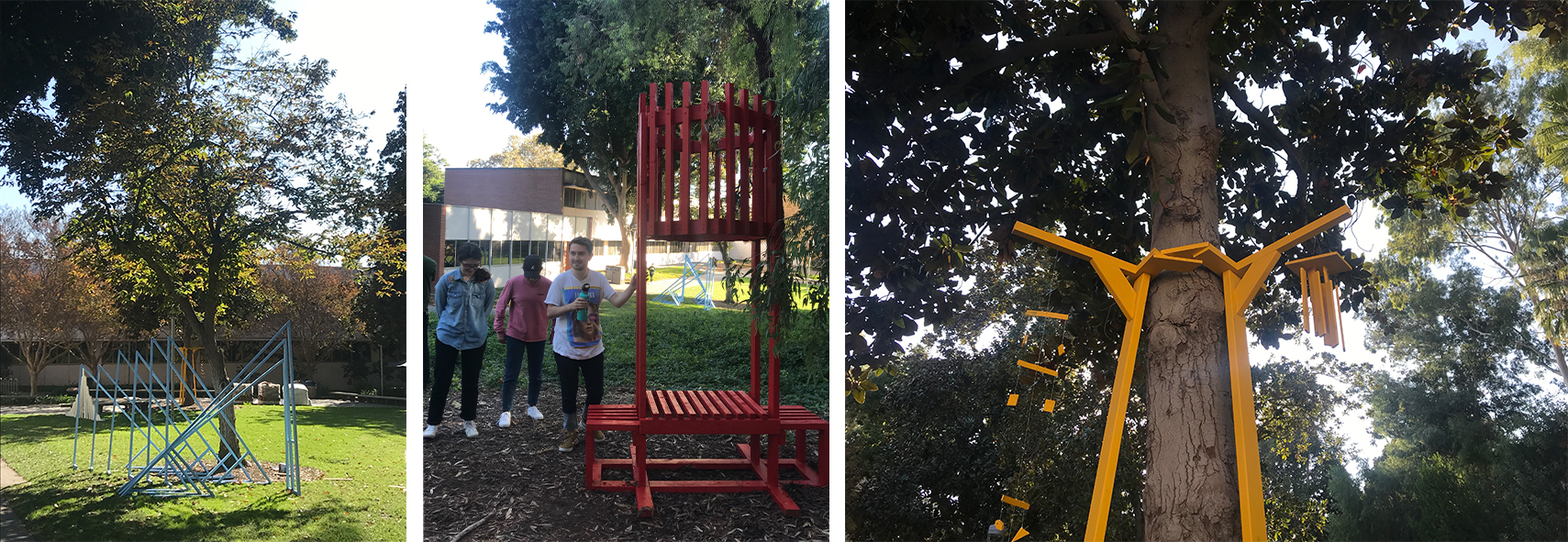
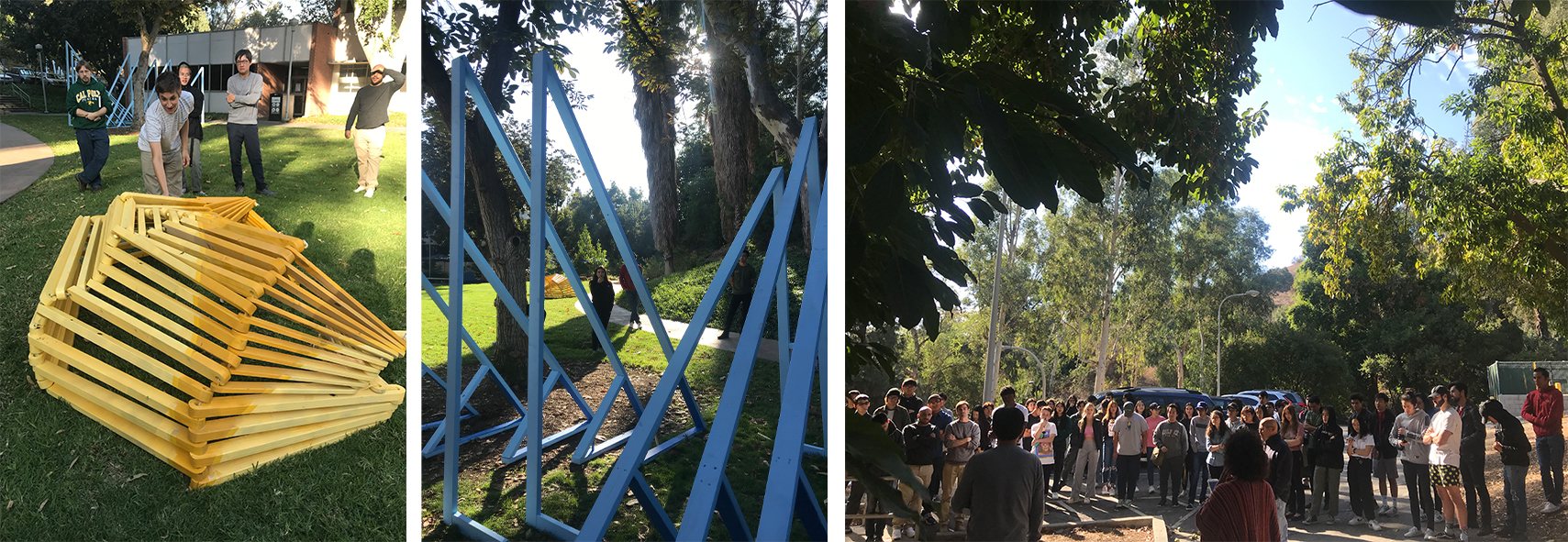
Occupied Spatial Unit (OSU) is an abstract spatial construction that can be occupied
and/or activated by people moving through it or pausing within it. Its purpose is to
invite people to experience the landscape in different, perhaps even unexpected or
surprising ways, using COLOR in specific ways as driven by site analysis conclusions.
During this phase of the project students will be constructing their OSU on site.